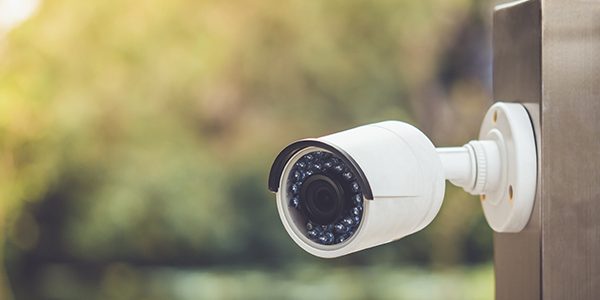Once you’ve had CCTV cameras installed at home, or at your offices, you obviously need to remember to check the findings. You’d be amazed how many people never look at their monitors, especially when the initial novelty has worn off, but you should. In this short blog our experts provide a quick round-up of the options for reviewing your camera footage.
Surveillance security
CCTV cameras can offer enhanced security and peace of mind. And monitoring your CCTV cameras can be easily done through various methods, including remote access, TV monitors, tablets, and mobile devices.
Remote access
Checking-in remotely is a popular and convenient way to monitor your cameras. It allows homeowners to view live footage and recorded video from any location with an internet connection. By using special software or mobile apps, authorised users can log in to the CCTV system and access camera feeds in real-time. Remote access enables you to monitor multiple cameras simultaneously and respond promptly to any suspicious activities or incidents.
TV monitors
Screens are commonly used in commercial premises control rooms or security stations to display camera feeds, but some homeowners also choose to install dedicated monitors, especially in larger properties. Such monitors provide a dedicated and fixed viewing platform, allowing security personnel to have a comprehensive overview of all the camera feeds across the premises in one location. TV monitors are especially useful for continuous monitoring, as operators can observe the footage on a larger screen and quickly detect any unusual events or behaviour.
Tablets and mobile devices
Hand-held devices offer the most flexibility for monitoring CCTV cameras, allowing you or your team/family to access camera feeds on the go. This feature is particularly beneficial for security personnel who need to monitor cameras while patrolling or moving around a facility. With the help of mobile apps, individuals can receive real-time notifications, view live video, and review recorded footage directly from their devices, ensuring constant vigilance and quick response. Whether you’re inside the house, in the garden, or even out, homeowners can access their camera feeds through devices enabling them to quickly check the live video or review recorded footage whenever they desire.
Footage storage
The retention period for CCTV footage in residential settings is typically shorter than that of commercial environments. While the specific duration will vary based on individual preferences, it is generally recommended to retain footage for a minimum of 7 to 14 days for domestic properties. This timeframe allows homeowners to review recent events and incidents that may have occurred without them instantly realising something is amiss.
Continuous monitoring
Continuous monitoring is as important for residential homeowners as commercial settings. By actively monitoring camera feeds, homeowners can identify any unusual activities or potential threats, such as trespassing, vandalism, or package theft. It is particularly useful when homeowners are present at home and need to maintain awareness of their surroundings without having to constantly roam the rooms.
Rewind mode
It’s possible to rewind recorded footage to review specific events or incidents that may have caught your attention. Whether it’s a strange noise, an unexpected visitor, any other suspicious activity, or you just want to see where the cat goes every night, the ability to review the footage in detail can provide valuable information. Similarly, homeowners should establish protocols for deleting older footage to ensure sufficient storage space and maintain the efficiency of their CCTV system.
Storage
When it comes to the storing business CCTV footage, it is essential to have a proper retention policy in place. The duration for which you should keep the footage depends on various factors, including legal requirements, industry regulations, and the nature of the surveillance environment. Different councils have specific guidelines regarding the retention of business CCTV footage gathered from High Streets and public areas, so it is crucial to adhere to those regulations.
Retention
In general, for standard security purposes, it is recommended to retain CCTV footage for a minimum of 30 days. This timeframe allows for investigation of incidents that may occur within that period. However, certain situations may require longer retention periods. For example, in high-security environments or industries with strict compliance regulations, footage may need to be stored for several months or even years.
In conclusion, monitoring CCTV cameras can be done through remote access, TV monitors, tablets, and mobile devices, each providing its own advantages in terms of convenience and flexibility. Regularly checking CCTV offers added security and soon becomes second nature if you do it as part of a daily routine. You’ve invested in the kit; now invest in peace of mind.

